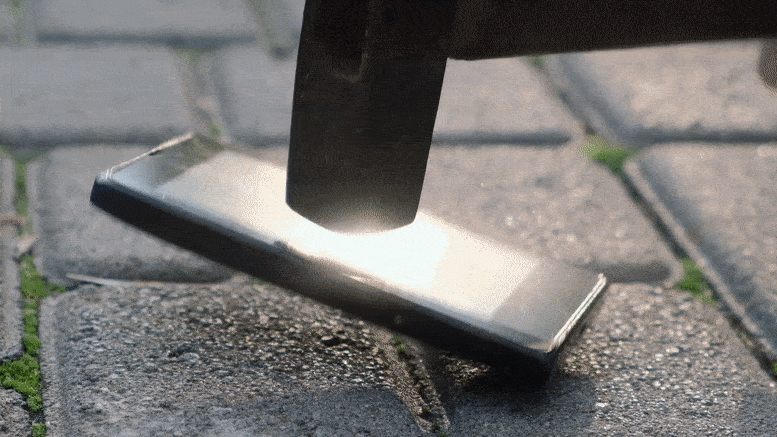
Researchers have developed a significantly tougher oxide glass using paracrystallization, paving the way for more durable and damage-resistant glass products in the future. (Stock video illustrating the concept of a super strong cell phone.)
Scientists have produced an oxide glass with unprecedented toughness. Under high pressures and temperatures, they succeeded in paracrystallizing an aluminosilicate glass: The resulting crystal-like structures cause the glass to withstand very high stresses and are retained under ambient conditions. Paracrystallization thus proves to be a promising process for producing extremely break-resistant glasses.
In many respects, glass is an attractive material for modern technologies. However, its inherent brittleness, which makes it prone to cracks and fractures, limits its potential applications. Research attempts to significantly bolster the toughness of glass while retaining its advantageous properties have largely failed to produce the desired results.
Innovative Approach and Process
The new approach presented in the scientific journal Nature Materials starts with oxide glasses which have a rather disordered internal structure and are the most widely commercially utilized glass materials. Using aluminosilicate, which contains silicon, aluminum, boron, and oxygen, as an example, the research team in Germany and China has now succeeded in giving it a new structure. To this end, they employed high-pressure and high-temperature technologies at the Bavarian Research Institute of Experimental Geochemistry and Geophysics (BGI) of the University of Bayreuth.
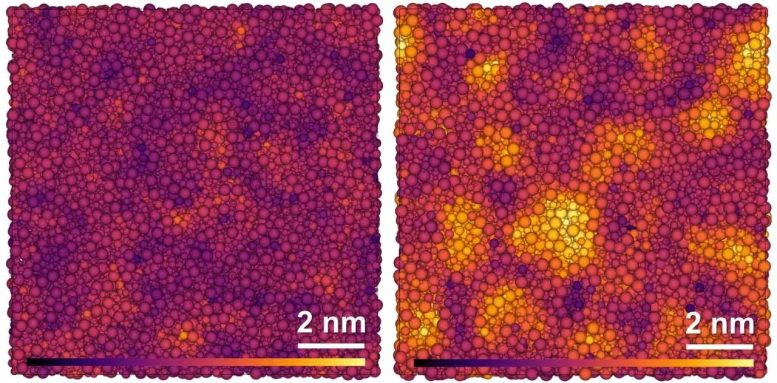
Simulated structure of glassy (left) and paracrystalline (right) grossular. The atoms of the elements oxygen, silicon, aluminum, and calcium (from small to large) are colored lighter the higher the degree of order in the surrounding structure. Credit: Hu Tang
At pressures between 10 and 15 gigapascals and a temperature of around 1,000 degrees Celsius, the silicon, aluminum, boron, and oxygen atoms grouped together to form crystal-like structures. These structures are called “paracrystalline” because they differ significantly from a completely irregular structure, but they do not approach the clear regular structure of crystals. Both empirical analyses using spectroscopic techniques and theoretical calculations clearly showed this intermediate state between crystal structures and amorphous irregularity.
Implications of Paracrystallization
Even after a drop in pressure and temperature to normal ambient conditions, the paracrystalline structures in the aluminosilicate glass remain. The penetration of the glass with these structures results in the toughness of the glass being many times higher than before paracrystallization. It now reaches a value of up to 1,99 ± 0,06 MPa (m)¹/². This is a toughness never before measured for oxide glasses. At the same time, the transparency of the glass is not seriously affected by the paracrystalline structures.
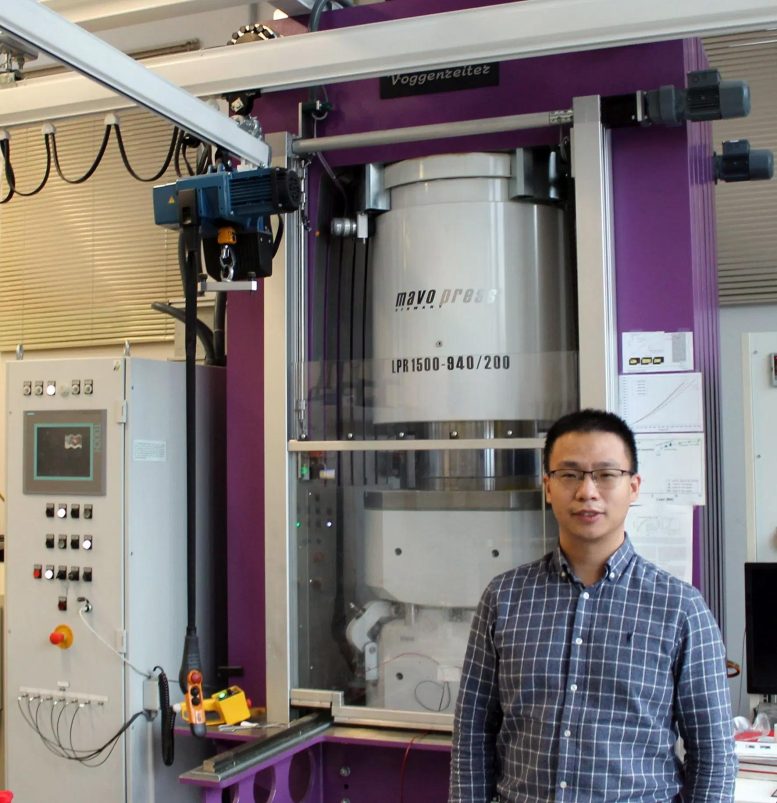
Dr. Hu Tang, first author of the study, in front of a high-pressure press at the Bavarian Research Institute of Experimental Geochemistry and Geophysics (BGI). Credit: UBT / Chr. Wißler
The researchers explain the extraordinary strengthening of the glass by the fact that forces acting on the glass from outside, which would normally lead to breakage or internal cracks, are now primarily directed against the paracrystalline structures. They dissolve areas of these structures and transform them back into an amorphous, random state. In this way, the glass as a whole acquires greater internal plasticity, so that it does not break or crack when it is exposed to these or even to stronger forces.
Future Prospects
“Our discovery highlights an effective strategy for developing highly damage-tolerant glass materials, which we plan to pursue with our research in the coming years,” said Dr. Hu Tang, first author of the new study.
“The increase in toughness due to paracrystallization shows that structural changes at the atomic level can have a significant impact on the properties of oxide glasses. At this level, there is great potential for optimizing glass as a material that is far from being exhausted,” adds Prof. Dr. Tomoo Katsura of the Bavarian Research Institute of Experimental Geochemistry and Geophysics.
Reference: “Toughening oxide glasses through paracrystallization” by Hu Tang, Yong Cheng, Xiaohong Yuan, Kai Zhang, Alexander Kurnosov, Zhen Chen, Wenge Xiao, Henrik S. Jeppesen, Martin Etter, Tao Liang, Zhidan Zeng, Fei Wang, Hongzhan Fei, Lin Wang, Songbai Han, Ming-Sheng Wang, Guang Chen, Howard Sheng and Tomoo Katsura, 7 August 2023, Nature Materials.
DOI: 10.1038/s41563-023-01625-x

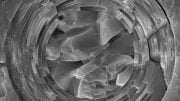
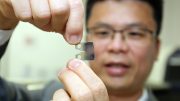
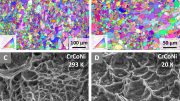
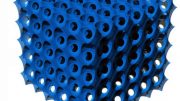
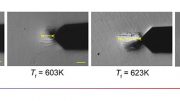

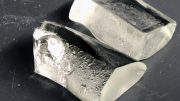

How does paracrystalline differ from quasicrystalline?
Wonderful discovery,expand the application.I have interest to study in your institute but lack support here in Africa. Kindly advise and consider my request.
Transparent aluminum…I knew it!
Scotty would be proud.